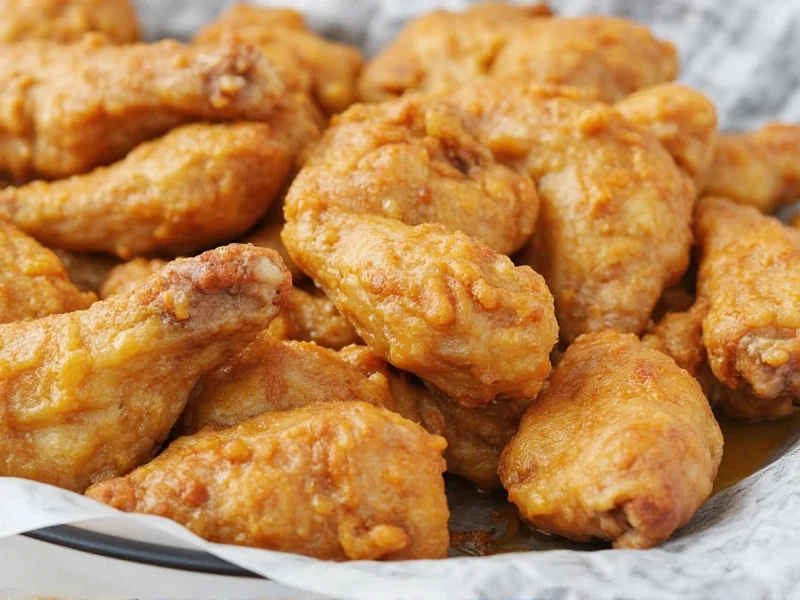For decades, the New York Times buttermilk chicken recipe has stood as a benchmark for home cooks seeking restaurant-quality fried chicken. Unlike many versions that rely on buttermilk solely for tenderness, the NYT approach balances marination time, seasoning technique, and frying temperature to create chicken that's simultaneously juicy inside and shatteringly crisp outside.
The History Behind the Recipe
Buttermilk chicken has Southern roots, where resourceful cooks discovered buttermilk's tenderizing properties enhanced tougher cuts of chicken. The New York Times adaptation emerged during the newspaper's food section evolution in the late 20th century, when food journalism began treating recipes as both practical instructions and cultural artifacts. This particular version gained prominence through its appearance in multiple NYT cooking resources, including the influential How to Cook Everything series.
Why This Buttermilk Chicken Recipe Works
The NYT method succeeds through three critical elements: the buttermilk's lactic acid gently breaks down proteins without making the meat mushy, the double-dredging technique creates a substantial yet delicate crust, and the precise oil temperature control prevents greasiness. Unlike rushed versions, this recipe requires proper marination time—typically 4-12 hours—which allows flavors to penetrate while maintaining texture integrity.
Authentic NYT Buttermilk Chicken Ingredients
This ingredient list serves four people and represents the standard New York Times buttermilk chicken recipe formulation:
| Ingredient | Quantity | Preparation Notes |
|---|---|---|
| Chicken pieces (thighs, drumsticks, breasts) | 3-4 lbs | Skin-on for best results |
| Buttermilk | 2 cups | Full-fat preferred |
| All-purpose flour | 2 cups | Plus extra for dredging |
| Garlic powder | 1 tsp | Freshly minced works too |
| Paprika | 1 tsp | For color and mild heat |
| Black pepper | 1 tsp | Freshly ground |
| Salt | 1½ tsp | Plus more to taste |
| Cayenne pepper | ¼ tsp | Optional for heat |
| Vegetable oil | Enough for 2" depth | For frying |
Step-by-Step Preparation Guide
Follow these precise steps for authentic New York Times buttermilk chicken results:
- Marinate the chicken: Combine chicken pieces and buttermilk in a large bowl. Refrigerate for 4-12 hours, turning occasionally.
- Prepare the coating: In a separate bowl, mix flour, garlic powder, paprika, black pepper, salt, and cayenne.
- Dredge properly: Remove chicken from buttermilk, letting excess drip off. Dredge thoroughly in flour mixture, pressing to adhere. Return to buttermilk for 30 seconds, then dredge again in flour for double coating.
- Rest before frying: Place coated chicken on wire rack for 15-20 minutes. This crucial step prevents coating from falling off during frying.
- Heat oil correctly: Fill heavy pot with 2 inches oil. Heat to 325°F (163°C) over medium heat. Maintain this temperature throughout frying.
- Fry in batches: Cook 3-4 pieces at a time without crowding. Dark meat takes 12-14 minutes; white meat 10-12 minutes, until golden brown and internal temperature reaches 165°F.
- Drain properly: Transfer to wire rack (not paper towels) to maintain crispness. Season with additional salt immediately after frying.
Pro Tips for Perfect NYT Buttermilk Chicken
Professional results require attention to these often-overlooked details:
- Temperature control: Use a reliable thermometer—fluctuating oil temperature creates greasy chicken. Adjust heat as needed to maintain 325°F.
- Marination duration: Don't exceed 12 hours or the buttermilk's acidity can make texture mushy.
- Double dredging technique: The second flour coating creates the signature shatteringly crisp crust that defines this ny times buttermilk chicken recipe.
- Resting period: Skipping the 15-20 minute rest before frying causes coating to slough off in the oil.
- Wire rack drainage: Placing fried chicken on paper towels traps steam, softening the crust—always use a wire rack.
Common Variations Worth Trying
While the classic new york times buttermilk chicken recipe stands perfectly on its own, these thoughtful variations maintain the technique's integrity:
- Spicy version: Add 1 teaspoon cayenne to the flour mixture or include hot sauce in the buttermilk marinade
- Herb-infused: Stir 2 tablespoons chopped fresh herbs (thyme, rosemary, or sage) into the buttermilk
- Smoky twist: Replace half the paprika with smoked paprika for deeper flavor
- Oven-finished: For extra-crisp results, finish in 375°F oven for 5 minutes after frying
Troubleshooting Common Issues
Even experienced cooks encounter challenges with buttermilk chicken. Here's how to address frequent problems with the nyt buttermilk chicken instructions:
- Soggy coating: Oil temperature too low or insufficient resting time before frying. Maintain 325°F and allow proper resting.
- Burnt exterior, raw interior: Oil temperature too high. Use thermometer and adjust heat immediately.
- Uneven cooking: Pieces too large or crowded in oil. Cut chicken uniformly and fry in small batches.
- Bland flavor: Underseasoned marinade or coating. Season both buttermilk and flour mixture adequately.
- Coating falling off: Insufficient double-dredging or inadequate resting period before frying.
Serving and Storage Recommendations
For optimal enjoyment of your ny times buttermilk chicken:
- Serve immediately after frying for peak crispness
- Pair with classic Southern sides: collard greens, macaroni and cheese, or cornbread
- Rest 5 minutes before serving to allow juices to redistribute
- Store leftovers in airtight container in refrigerator for up to 3 days
- Reheat in 375°F oven for 10-15 minutes (not microwave) to restore crispness











 浙公网安备
33010002000092号
浙公网安备
33010002000092号 浙B2-20120091-4
浙B2-20120091-4